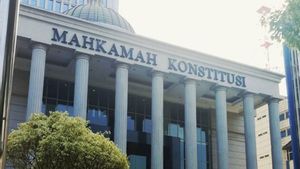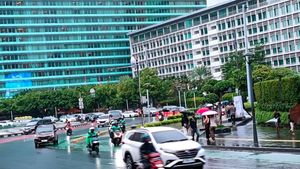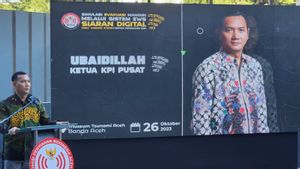JAKARTA - Center for Indonesian Policy Studies (CIPS) researcher Mukhammad Faisol Amir said the government needed to target longer-term solutions that were more effective in order to overcome the high price of food.
"Testing the high price of food with logistics subsidies cannot be done continuously," said Faisol in an official statement, quoted from Antara, Friday, January 13.
According to him, the logistics subsidy policy for food transportation is a short-term policy and does not solve the problem of high food prices.
Government policies by providing food logistics subsidies can help to reduce the burden of rising food prices at the consumer level, so prices will tend to be stable. But keep in mind that this policy can only be done in the short term, considering that there is still a lot of homework in logistics issues in Indonesia.
Logistic subsidy policies cannot be carried out continuously, because apart from burdening the government budget, the Ministry of Trade has instructed the local government's contribution from the Regional Revenue and Expenditure Budget (APBD) of 2 percent, which will cause other problems.
For example, areas with small APBDs will tend to choose to supply food with cheaper logistics costs. Consequently, food diversification will be difficult to achieve and this can trigger scarcity in certain commodities in areas that are not the production center.
In fact, continued Faisol, food diversification allows consumers to access various food commodities and this is expected to participate in improving consumer nutritional status in the long term.
The structure of food prices in Indonesia is influenced by logistics costs which are still quite large. It is noted that food logistics costs in Indonesia contribute up to 41 percent of the total food prices at the consumer level, especially for imported foodstuffs, so of course, it becomes an obstacle to accessibility for the public to affordable and quality foods.
He mentioned that infrastructure development that connects regions in Indonesia is a long-term solution that can contribute to reducing logistics costs. Infrastructure development in Indonesia should ideally depart from the goal of connecting regions and supporting economic activities.
In addition to Indonesia's geographical challenges, which are archipelagic countries, the risk of extreme weather also hampers food distribution, so food prices can increase sharply, especially in areas that are not connected to land transportation routes with production centers.
Therefore, said Faisol, there are several steps that the government can take in its capacity as a regulator, infrastructure investor, and policymaker. First, by providing infrastructure that increases connectivity between regions in Indonesia which is carried out in the long term so that it can create a power-resistant supply chain.
Second, by encouraging investment in modern port management to make logistics costs efficient. Infrastructure development will also increase the attractiveness of investment in the agricultural sector.
Thus, improving and providing adequate infrastructure, including roads, ports, and access to electricity outside Java in the long term, can create investment opportunities, both in the agricultural sector and other strategic sectors.
The English, Chinese, Japanese, Arabic, and French versions are automatically generated by the AI. So there may still be inaccuracies in translating, please always see Indonesian as our main language. (system supported by DigitalSiber.id)










